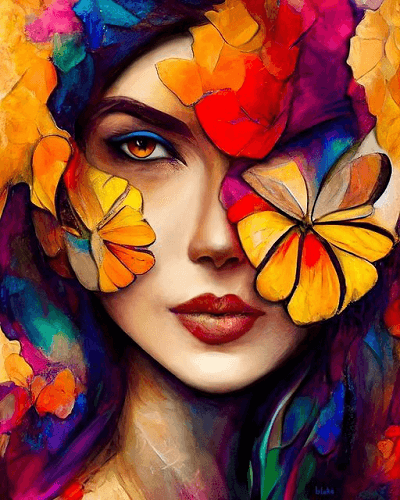How Trump Art Shows Modern Political Satire in the Art World
How Trump Art Shows Modern Political Satire in the Art World
Blog Article
Getting Started on a Visual Trip With the Lyrical Interpretations of Nature in Impressionist Landscapes
In the world of art history, the Impressionist movement stands out as a critical duration that changed the method nature was illustrated on canvas. Musicians such as Claude Monet, Camille Pissarro, Edgar Degas, Berthe Morisot, and Vincent Van Gogh caught the significance of the environment via their unique analyses, producing landscapes that go beyond mere graph. Each brushstroke, each play of light and shadow, and each shade choice in their jobs talks quantities regarding the musicians' deep connection to nature and their capacity to equate its charm onto the canvas. As we explore the lyrical analyses of nature in Impressionist landscapes, we are invited to immerse ourselves in a world where reality and feeling link, using a look right into the musicians' profound appreciation for the all-natural globe.
The Captivating Brushstrokes of Claude Monet
Claude Monet's mastery of brushstrokes goes beyond simple method, imbuing his landscapes with a heavenly quality that enthralls and captivates viewers - trump art. His cutting-edge use color and light, incorporated with his distinctive brushwork, develops a feeling of activity and life within his paints. Monet's renowned collection of works portraying water lilies and his famous haystacks showcase his capacity to record the fleeting effects of light and atmosphere

Enjoying Light and Darkness With Camille Pissarro
Symbolizing a comparable reverence for the interaction of light and shadow, Camille Pissarro's imaginative vision unfolds as an unified expedition of the environment's luminescent subtleties. Pissarro, a vital figure in the Impressionist movement, masterfully caught the vibrant partnership in between light and shadow in his landscapes. His proficient use of color and brushwork permitted him to communicate the refined shifts in light that specify different times of day and periods.
Pissarro's paintings often feature dappled sunlight filtering system through fallen leaves, casting complex patterns of light and shadow on the planet below. In jobs such as "Hoar Frost, the Effect of Snow, Pontoise," Pissarro skillfully portrays the crisp illumination of winter months sunlight compared with the great shadows that define the snowy landscape. By accepting both light and darkness in his structures, Pissarro welcomes audiences to submerse themselves in the all-natural beauty and short-term effects of light worldwide around them.

Through Pissarro's jobs, we are advised of the transformative power of light and darkness, welcoming us to stop briefly and appreciate the fleeting moments of charm existing in the day-to-day landscapes that surround us.
A Symphony of Color Styles by Edgar Degas
Edgar Degas orchestrates a vivid harmony of colors in his masterful art work, instilling his compositions with a dynamic interaction of colors that captivate the audience's stare. Known primarily for his ballet dancers and intimate scenes of Parisian life, Degas skillfully adjusted shades to share mood and activity in his paintings. trump art. His usage of vibrant, different colors and subtle tonal variations created a sense of deepness and vibrancy within his works
Degas' color combination typically included abundant blues, deep greens, and warm oranges, which he applied with certain brushstrokes to record the significance of his topics. Whether portraying a ballerina mid-performance or a team of friends talking at a coffee shop, Degas' shades not just illustrated the scene however also stimulated a sense of feeling and energy.
Additionally, Degas' trial and error with light and shadow added an extra layer of complexity to his shade structures, enhancing the overall ambience of his paints (trump art). Via his skillful adjustment of shade, Degas produced an aesthetic harmony that remains to reverberate with audiences today
Exploring Nature's Serenity With Berthe Morisot
Berthe Morisot's artistic vision supplies a peaceful departure this link from the vibrant color symphonies of Edgar Degas, as she records the tranquility of nature in her expressive landscapes. Understood for her fragile brushwork and intimate representations of everyday life, Morisot's landscapes emanate a feeling of peace and consistency.
Morisot's paints often feature soft, low-key tones that convey a feeling of calmness and peacefulness. Her works, such as "The Cradle" and "Summer's Day," display her ability to capture the subtle appeal of nature in a way that is both contemplative and relaxing to the customer.
Unlike some of her Impressionist equivalents that focused on vibrant compositions and bold colors, Morisot favored to create gentle, introspective scenes that welcome the visitor to mirror and pause. Through her masterful use light and darkness, Morisot develops a sense of serenity that resonates with the customer on a deep psychological degree.
The Psychological Landscapes of Vincent Van Gogh
Vincent Van Gogh's landscapes vividly convey a depth of emotion with their dynamic brushwork and meaningful use shade. The Dutch post-impressionist musician is renowned for his ability to catch raw and extreme feelings in his paints, going beyond typical depictions of nature. Van Gogh's troubled personal life, marked by mental health struggles, significantly influenced his art, infusing his landscapes with a sense of unease, melancholy, or pep.
In jobs such as "Starry Evening" and "Wheatfield with Crows," Van Gogh's swirling brushstrokes and vibrant shade selections stimulate an extensive psychological action from customers. The unstable skies and upset landscapes in his paintings reflect his inner chaos and psychological turbulence, welcoming visitors to dive into the complexities of his psyche.
Van Gogh's unique aesthetic language, identified by overstated point of views and bold usage of shade, produces landscapes that resonate with viewers on a deeply psychological degree. Through his art, Van Gogh invites us to see nature not simply as an outside reality but as a mirror of our innermost sensations and emotions.
Conclusion
In verdict, the impressionist landscapes of musicians such as Claude Monet, Camille Pissarro, Edgar Degas, Berthe Morisot, Visit Your URL and Vincent Van Gogh provide a unique and exciting aesthetic analysis of nature. With their usage of brushstrokes, emotion, light, and shade, these artists have actually produced a harmony of pictures that stimulate a sense of calmness More hints and elegance in the environment. Their works remain to influence and enchant visitors with their lyrical interpretations of the landscapes around us.
Each brushstroke, each play of light and shadow, and each color selection in their works speaks quantities about the artists' deep link to nature and their ability to equate its elegance onto the canvas. His ingenious usage of shade and light, combined with his unique brushwork, creates a sense of motion and life within his paints. His adept use of shade and brushwork permitted him to convey the subtle changes in light that specify different times of day and seasons.

Report this page